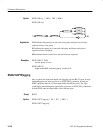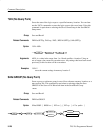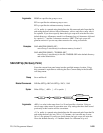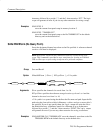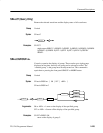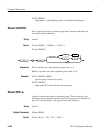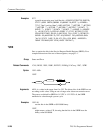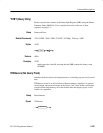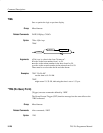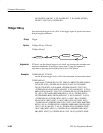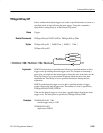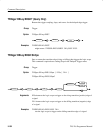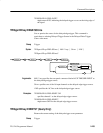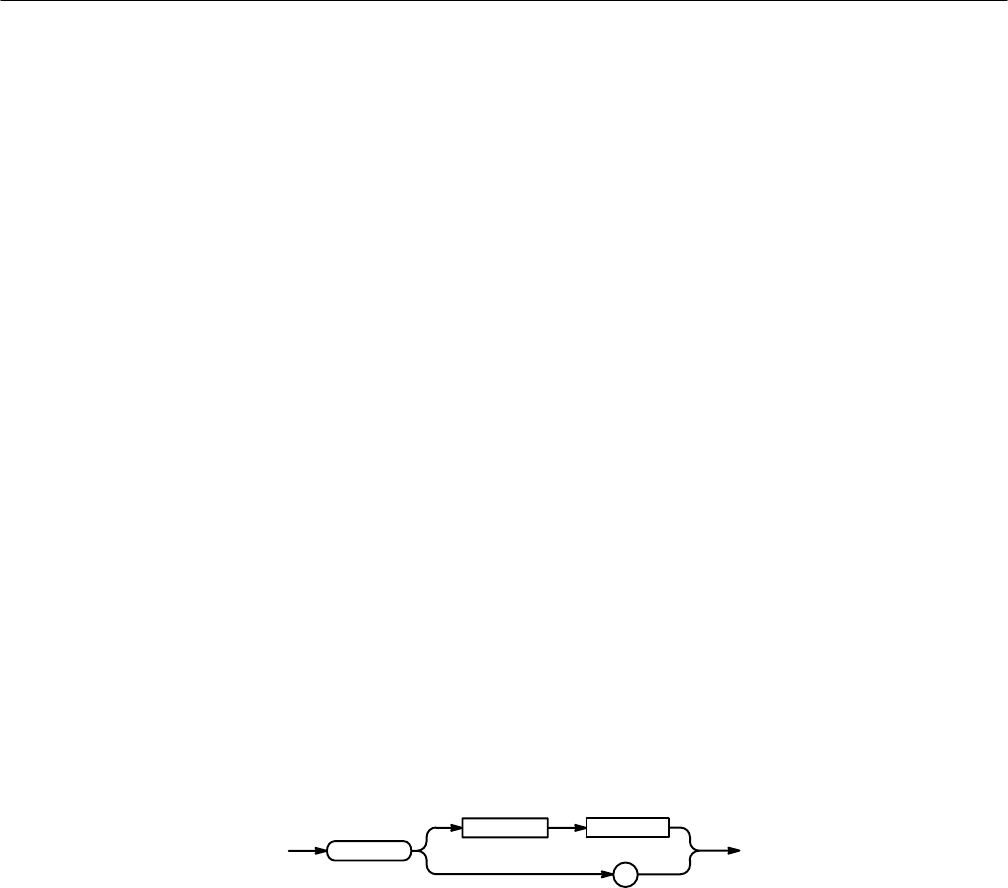
Command Descriptions
2–226
TLS 216 Programmer Manual
SET?
a partial return string may look like this: :ACQUIRE:STOPAFTER RUNSTOP;
STATE 1;MODE SAMPLE;NUMENV 10;NUMAVG 16;REPET 1;:APPMENU:
TITLE "Application Menu";LABEL:BOTTOM1 "";BOTTOM2 "";BOTTOM3
"";BOTTOM4 ""; BOTTOM5 "";BOTTOM6 "";BOTTOM7 "";RIGHT1 "";
RIGHT2 ""; RIGHT3 "";RIGHT4 "";RIGHT5 "";:HEADER 1;:VERBOSE
1; :ALIAS:STATE 0;:DISPLAY:FORMAT YT;STYLE VECTORS;FILTER
SINX;PERSISTENCE 500.0E-3;GRATICULE FULL;TRIGT 1;INTENSITY:
OVERALL 85;WAVEFORM 75;TEXT 60;CONTRAST 150;:MESSAGE:SHOW
"hello";STATE 1;BOX 74,84,475,135;:LOCK NONE; :HARDCOPY:
FORMAT EPSIMAGE;PORT GPIB;LAYOUT PORTRAIT;.
*SRE
Sets or queries the bits in the Service Request Enable Register (SRER). For a
complete discussion of the use of these registers, see page 3–1.
Status and Error
*CLS, DESE, *ESE, *ESR?, EVENT?, EVMSg?, FACtory, *PSC, *STB?
*SRE <NR1>
*SRE?
?
<Space>
<NR1>
*SRE
<NR1> is a value in the range from 0 to 255. The binary bits of the SRER are set
according to this value. Using an out-of-range value causes an execution error.
The power-on default for SRER is 0 if *PSC is 1. If *PSC is 0, the SRER
maintains its value through a power cycle.
*SRE 48
sets the bits in the SRER to 00110000 binary.
*SRE?
might return a value of 32, showing that the bits in the SRER have the
binary value 00100000.
Examples
Group
Related Commands
Syntax
Arguments
Examples



